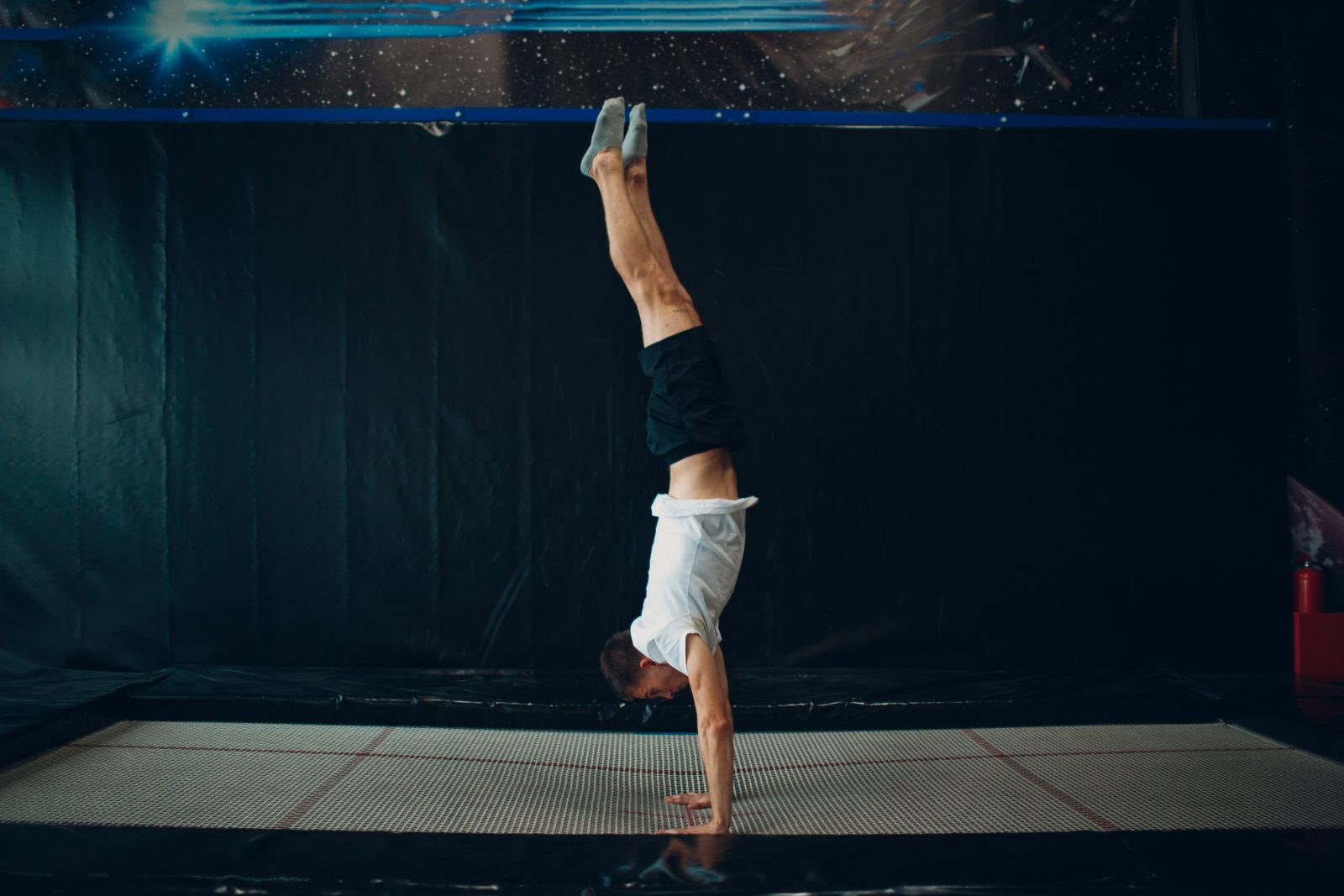In the realm of fitness, trampoline rebounding has emerged as a dynamic and exhilarating way to enhance physical well-being. The trampoline, once a source of childhood amusement, has evolved into a versatile piece of exercise equipment that offers a plethora of health benefits to individuals of all ages. This low-impact, high-intensity workout has gained popularity for its ability to combine cardiovascular, muscular, and lymphatic benefits in a single, enjoyable activity.
Exercise trampoline rebounding involves bouncing on a mini-trampoline, commonly referred to as a rebounder. Fitness enthusiasts, athletes, and people who are health-conscious have all embraced what was once considered merely entertainment. Its effectiveness in improving cardiovascular endurance, strengthening muscles, boosting metabolism, and promoting overall wellness has led to its integration into various fitness routines and programs.
This article delves into the multifaceted health benefits of trampoline rebounding. From its impact on cardiovascular health to its contribution to lymphatic circulation, we will explore how this seemingly simple activity can yield impressive results.
Additionally, we will discuss its potential for stress reduction, improved balance and coordination, and suitability for people with varying fitness levels. As we uncover the science behind the bounce, it becomes evident that exercise trampoline rebounding is not only a fun and engaging workout but also a gateway to a healthier and more energetic lifestyle.
So, let’s spring into the world of rebounding and discover the numerous advantages it offers for both body and mind.
Rebounding
Tumbling and trampoline training have a long history that may be traced back to ancient China, Egypt, and Persia through archeological drawings. In 1934, George Nissen and Larry Griswold created the first modern trampolines at the University of Iowa, according to the Olympics’ official website.
First employed for astronaut training, trampolines have since found employment in a variety of different sports, including acrobatics, tumbling, diving, gymnastics, and freestyle skiing. Trampolining eventually gained enough traction to be included as a medal event in the Olympic Games.
In 1964, the first Trampoline World Championships were held, and in 1967, the United States officially recognized trampoline as an Olympic sport. Beginning as two distinct mini trampolines separated by a tiny table covered in a mat, the double mini-trampoline competition was added in 1978. Bob Bollinger developed a one-piece unit, which is now the standard for this competition.
In recent years, trampolines have contributed to our knowledge of gravity’s influence on physical activity. In 1980, NASA conducted research on rebounding, examining eight young men aged 19 to 26, and the results were published in the Journal of Applied Physiology. The objective was to figure out why acceleration is distributed so unevenly across the body.
Advantages of Trampoline exercise
Boosts cellular fortification and cardiovascular growth
Aerobic training on a trampoline has been shown to strengthen the heart and lungs in remarkable ways. When compared to running, the amount of labor needed to do a trampoline exercise at a similar level of effort was much higher on the trampoline.
Since the body is able to boost oxygen intake when rebounding, as opposed to certain other physical exercises, it is possible to receive a much greater workout. Oxygen helps strengthen our cells and provides the ability to endure more activity efficiently.
The shifts in gravity that occur during rebounding allow for an increase in oxygen uptake by the cells. Studies have shown that trampolining improves aerobic capacity when compared to treadmill testing. As a result, people may be able to exercise longer.
Children with cystic fibrosis saw improvements in their lung function and maximal oxygen uptake after participating in eight weeks of brief, daily trampoline workouts, according to research published in the International Journal of Sports Medicine. Six girls and two boys aged 10–13.5 years old with cystic fibrosis exercised on a tiny trampoline as part of a recommended regimen. Three brief trampoline intervals made up the training.
Maximal oxygen consumption (VO2 max) increased over the training phase. In addition, trampoline exercise programs are recommended as additional forms of training to add so that many patients can break up the monotony of the training.
Can boost immune system performance by increasing lymph flow
Lymph fluid circulation improves by rebounding, which results in more active white blood cells and a stronger immune system. Lymph, a component of the circulatory system, carries a clear, colorless fluid that helps rid the body of waste products. Lymphatic valves are thought to open during a shift in gravity, allowing for a greater flow of this fluid.
When you first make contact with the trampoline, thanks to gravity, you’ll experience this shift. The lymphatic valves then open as the body descends below the surface.
Landing induces a rise in lymphatic drainage due to the increased G-force, which boosts circulation and may aid in the overall detoxification process.
Promotes stability
The U.S. National Library of Medicine also highlighted a study on the impact of exercise on the postural balance of older women. These routines can help seniors maintain their independence as they age by minimizing the likelihood that they will experience functional restrictions.
The purpose of this research was to compare the benefits of three different types of gymnastics training: mini trampoline, water, and tradition. Seventy-four physically able-bodied geriatric women were divided at random into three treatment groups.
There was a 12-week period of physical training in which all participants engaged in cardio, strength, flexibility, and sensory-motor activities. Postural balancing tasks were used to evaluate the efficacy of each intervention.
The study adds to a growing body of evidence that shows how beneficial it can be for elderly women to engage in physical activity that emphasizes balanced postures, such as a trampoline workout.
Improves athletes’ muscular strength, growth, and proprioception
Proprioception, or the body’s ability to detect the position, location, orientation, and movement of its parts, is reported to be boosted by regular rebounding sessions, along with a person’s overall physical strength and muscular growth.
Twenty individuals with Parkinson’s disease were randomly split into two equal groups of weight-bearing exercises and rebound exercises with no significant differences in age, weight, or height After eight weeks, they compared the patients’ range of motion, proprioception, and quality of life.
There were significant enhancements in all three domains for both groups, although the rebounding therapy group showed more rapid enhancements overall.
Gentle on the arteries
Rebound exercise on a trampoline protects your bones, muscles, and ligaments from damage. The trampoline itself absorbs a lot of the impact of each bounce because of the way it is constructed, typically using springs or bungee bands.
According to the aforementioned NASA study, there appears to be a more even distribution of pressure or force (G-force) while jumping on a trampoline. When rebounding, weight is distributed more equally across the ankle, back, and forehead than when running, where it is concentrated at the ankles and leads to more frequent injuries.
This means that substituting trampoline exercises for traditional ones can help alleviate joint pain and prevent common running injuries in a completely natural way.
Picking the right rebounder
Due to the high risk of injury associated with trampolines, it is important to avoid saving money by purchasing a low-quality model. They can also be missing crucial resources for success.
To get the most out of your rebounder, make sure it contains at least 32 tapering springs. With this, the ball may bend as needed and bounce more consistently. Longevity is another benefit of steel structures.
For novices or the elderly, versions with built-in support bars may be the best option.
Starting out with your new rebounder
Whether you’re indoors or outdoors, you can use a rebounder, often known as a mini trampoline. You should ease into the equipment with smaller jumps and build up your confidence before attempting larger ones.
If you want to do some burst training at home, you can use a trampoline. You can get moving with some classic exercises, like jumping jacks.
Rebounding is an enjoyable, novel, and effective form of low-impact exercise. Burning calories, building muscle, and increasing balance can all be accomplished in as little as 15 to 20 minutes each day, while also bolstering the immune system and kicking off the afterburn effect.
Rebounding or trampoline exercise
Time: 20–45 minutes, depending on how many sets are done.
Warmup:
Simple trampoline jump
Your thighs, glutes, and calves can all benefit from a simple bounce.
- Place your feet shoulder-width apart on the little trampoline.
- Keep your shoulders and arms relaxed, but keep your elbows slightly bent.
- Keep a tiny bend on your knees and a light, bouncing motion. You shouldn’t lift your feet off the trampoline by more than a few inches.
- Do this a total of 20–30 times.
- After the 15-second break, do it again for another two rounds.
Jumping jacks
This timeless classic works the inner and outer thighs and raises the heart rate.
- Jump out with your feet together and your arms extended up and above your head. Then go back to the beginning and do it again.
- Jump up and down for 30 to 45 seconds.
Planks
Using this form of the plank, you can strengthen your abs and back.
- If your trampoline isn’t big enough for you to do a full push-up on it, go into the plank position with your forearms in the center and your feet on the floor.
- For 20–30 seconds, maintain the plank position. Ten seconds of letting go, and then three or four more repetitions
Knees up
This is a fantastic method for increasing cardiovascular fitness and strengthening abdominal muscles. - Keep your feet hip-width apart when you stand.
- Bring your right knee up, then your left, and repeat.
- When you’re ready, do it like you’re sprinting in place.
- Twenty times through (two on each side constitute one rep).
Intermediate to advanced plank to pushup
This move strengthens your upper body, particularly your arms, chest, and entire core.
- If your trampoline isn’t big enough for your whole body, start in a plank position with your forearms in the middle and your feet on the ground.
- Move your weight to your hands one at a time, do a set of pushups, and then return to a forearm plank.
- Keep your abdominal muscles active at all times.
- Perform between 6 and 10 repetitions.
Treadmill squats
Curious as to how you might improve your core strength? You’ll need to use your abs in order to do this exercise. If done correctly, it can help strengthen your glutes, quads, and abdominals. - Place your feet shoulder-width apart on the little trampoline and your arms by your sides.
- Instead of landing in a standing position, jump and land in a squat with your knees bent, butt back, and thighs parallel to the ground. Putting your arms out in front of you like that can give you a sense of stability.
- Get back to square one and do it another fifteen to twenty times. You might want to ease into things first. Once you’ve gotten the hang of the exercise, you may need to pick it up and perform it in one fluid motion, much like a jump squat you might do on the ground.
- You should try to complete the set three to four times.
Precautions
It is crucial that kids never use a trampoline without adult supervision. Trampoline safety relies heavily on the condition and quality of the equipment.
Young children can become stuck in the spaces between the coils and the main surface. Never jump on a trampoline without an adult present.
If you have any kind of medical or physical condition, you should talk to your doctor before starting any new exercise program, and that includes trampoline workouts.















Find Us on Socials